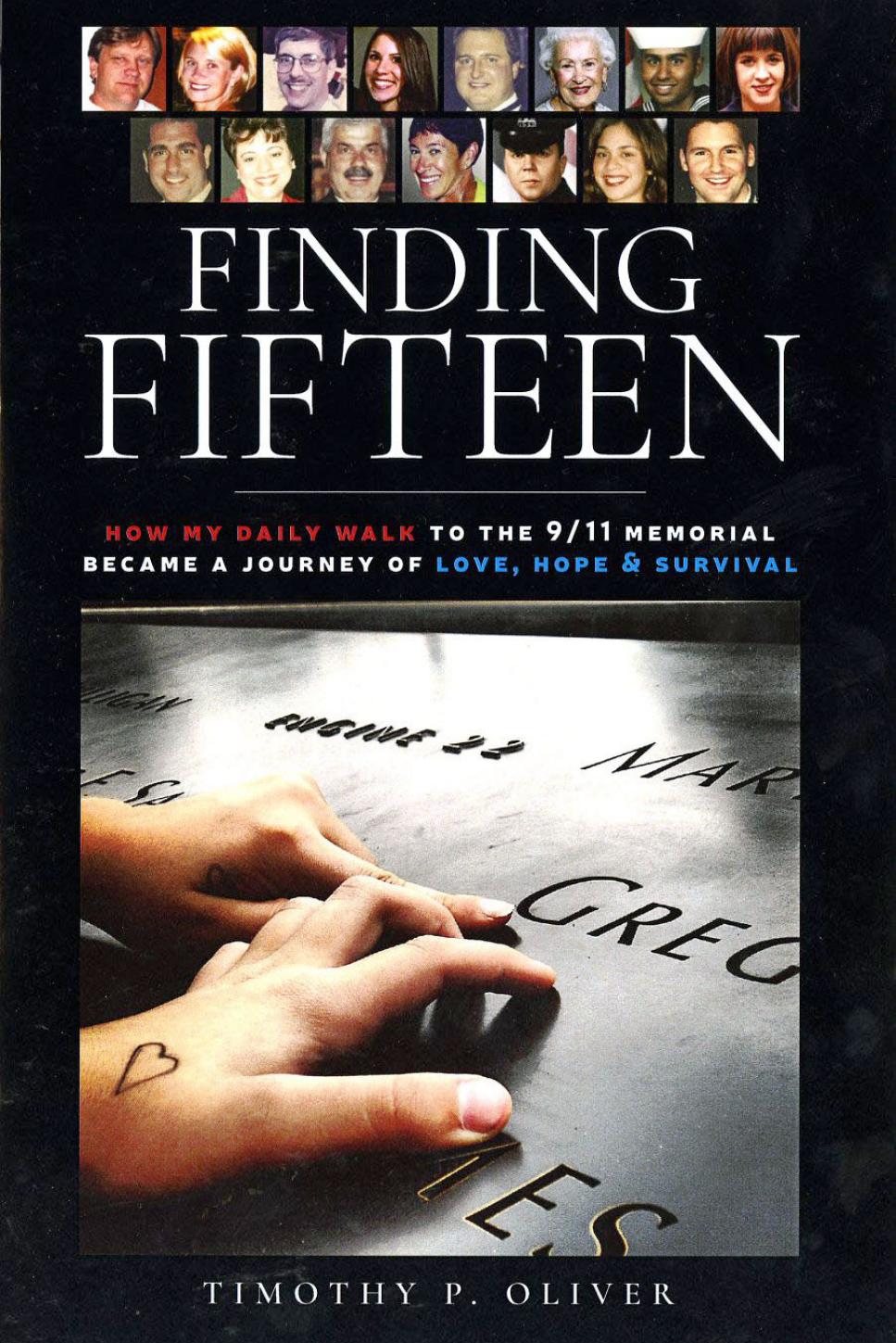The Loop
A regular commute past the NYC 9/11 site inspires a book of honor

GolfDigest.com will regularly highlight a book that it finds of interest to readers. This week is:
Finding Fifteen: How My Daily Walk to the 9/11 Memorial Became a Journey of Love, Hope & Survival, By Timothy P. Oliver, Amazon Digital Services, $19.99, paperback (Kindle $17.99), 301 pages, available at findingfifteen.com or amazon.com
We become much better as a nation when we learn more about fellow citizens and what their lives are all about. But due to the senseless global terrorism onslaught, we are too often becoming tragically familiar with people we otherwise wouldn’t know. When the faces of victims and their back stories are posted in news coverage, we recoil at how the futures of people living promising lives were ended abruptly, with no warning. The shattering of innocent lives causes us to grieve and cry as if we’d known each one personally, but in reality, we only know them from a distance.
For those who regularly commute past a 9/11 memorial, however, there is a closer connection. You can’t help but be reminded of the horrific attack on the United States and what it did to the nation on a large scale but also to each victim and their extended family and friends.
Golf Digest Art Director Timothy P. Oliver—who answers to Tim in the office—has been taking that kind of commute, through the World Trade Center 9/11 Memorial plaza, ever since the magazine moved last January from its longtime Connecticut home into 1 World Trade Center—the Freedom Tower—where our parent company, Conde Nast, is headquartered. With normal literary reviews of staff members, we nearly take a clandestine approach to publicizing the book, our tradition always being to not appear too braggadocious. But in the case of this special book on a national tragedy, we’re proud to get the word out about our colleague’s tribute to 9/11 families.
RELATED: More golf book reviews from Golf Digest Oliver is normally on the design side, having worked at Time and The New York Times prior to Golf Digest, along with designing books by Tom Watson, Phil Mickelson and Nick Faldo, among others. But for Finding Fifteen, Oliver, a Waterbury, Conn., native, brought out his writing skills from his days as a reporter for Gannett Westchester Newspapers. This is his first book where he both wrote and designed.
At the WTC site, within a few paces of the Freedom Tower doors, there are two square memorial pool/waterfalls in the footprints of where the Twin Towers stood. The names of the nearly 3,000 victims of terrorism on Sept. 11, 2001 (and the 1993 WTC bombing) are engraved on the pool edges. Randomly selecting 15 names, Oliver, along with his wife, Teresa, and daughter, Nichole, researched the group and conducted dozens of interviews from people around the nation.
Pointing out that 80 million Americans have been born since 9/11 and thus have no personal memory of the terrorist attack, Oliver embarked on the book to honor these 15 people in particular and the thousands of victims as a whole.
The 15 are each given a chapter, titled by their first names (I’ve added profession): Kenny (firefighter), Melissa (director of business development), Brooke (bond trader), John (aka Yash) (police officer), Myra (public relations/manager), Romeo (Navy), Joanna (events coordinator), Tony (WTC building maintenance), Amy (flight attendant), John (investment banking), Bryan (military analyst), Michael (bond salesman), Hilda (mother-in-law), Mitch (family court officer), Diane (tax auditor supervisor). In an epilogue, Oliver writes about his cousin, Brian Shattuck, who is a staff sergeant serving in Afghanistan.
We learn the life story of these people destined for tragedy, either in New York, the Pentagon building, or Pennsylvania. To a large degree, this is a tough book to read. Knowing that each will have a bitter end, the sequence of life events runs through years, months, weeks, days and finally the hours leading to each person’s death. We dread the fact that we know what will happen, and the coincidences and bad timing that put people at the wrong place at the wrong time in particular affect the reader. People died who sacrificed their lives for others; stories are told of people who escaped that fateful day by a twist of fate. And as we learn what life has been like for family and friends 15 years after the attack, we see that suffering still lingers.
At times the anger one feels at injustice comes to a boil. These victims were living productive lives, with future plans, being a vibrant part of their family and jobs, doing good for others. What right do others with no similar values and who know only death and want to inflict harm on people have to take their lives away?
In the end, however, for each victim there is a celebration of what they did, and for that we can be grateful for a chance to learn about them. Not personally, but as close as we’re ever going to get.